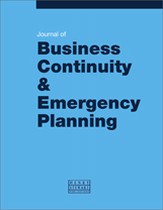Strengthening infectious disease surveillance in a Dutch–German crossborder area using a real-time information exchange system
Abstract
International outbreaks are occurring much faster than before and require rapid transnational detection and response. Never before has there been a more urgent need for improved crossborder collaboration on harmonisation of surveillance and response systems despite varying legislations. In the Euregion Maas Rhine, the Public Health Services of South Limburg in the Netherlands and Aachen in Germany agreed to join forces to work on a collaborative tool for sharing real-time infectious disease data. Both units had already implemented an adapted version of HPZone (a web-based software suite for managing infectious diseases at the local level). The collaborative work was realised through finding solutions to five key challenges. First, Euregional disease protocols were agreed commensurate with national guidelines. Secondly, a minimal dataset for infectious disease exchange information was negotiated taking into consideration international health regulations and differences in legislation. Thirdly, a mature risk assessment model for infectious disease was augmented to account for transborder spread and Euregional impact. Fourthly, protocol alert rules were negotiated on triggers for early warning. Finally, a crossborder dashboard, as a component of HPVista and encapsulating the four previous deliverables into a secure web-based system, was developed. HPVista is the parent application to HPZone and enables wider incident command and control regionally, nationally and internationally. The dashboard has facilities for displaying what, when, where and how cases, contacts and outbreaks happen in the crossborder area. It also provides secure communications for further discussion and exchange of other key information not currently shared electronically. The collaborative work embedded in the modified HPZone and HPVista versions with real-time surveillance and geographical information system mapping readily facilitates the systematic analysis of crossborder health incidents in a continuously changing environment and will result in improved public health emergency management.
The full article is available to subscribers to the journal.
Citation
Waarbeek, Henriëtte Ter, Hoebe, Christian, Freund, Hermann, Bochat, Verena and Kara-Zaïtr, Chakib (2011, June 1). Strengthening infectious disease surveillance in a Dutch–German crossborder area using a real-time information exchange system. In the Journal of Business Continuity & Emergency Planning, Volume 5, Issue 2. https://doi.org/10.69554/QQLI7263.Publications LLP
